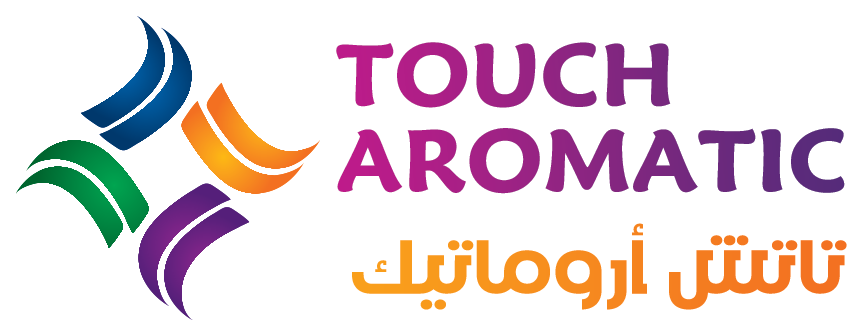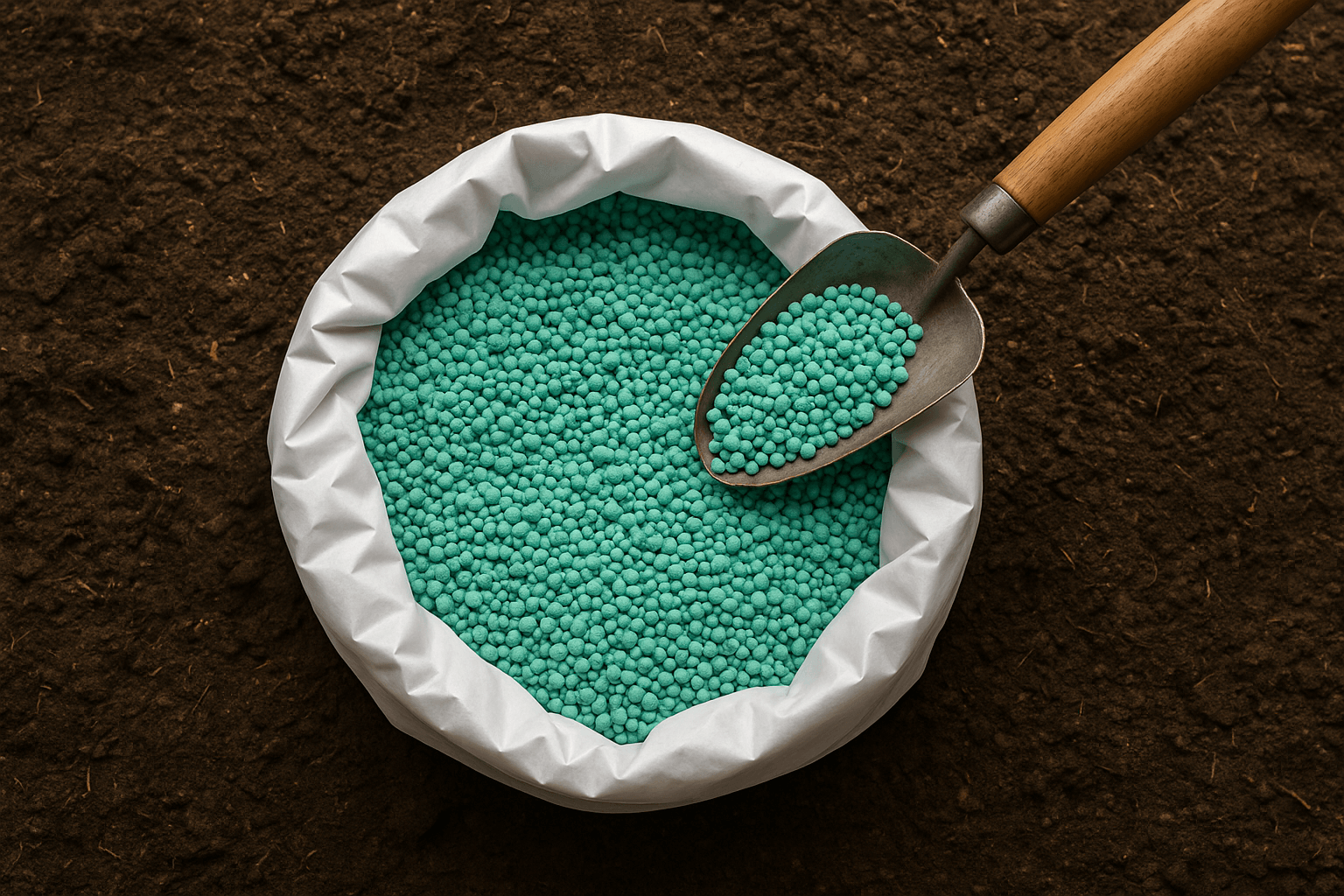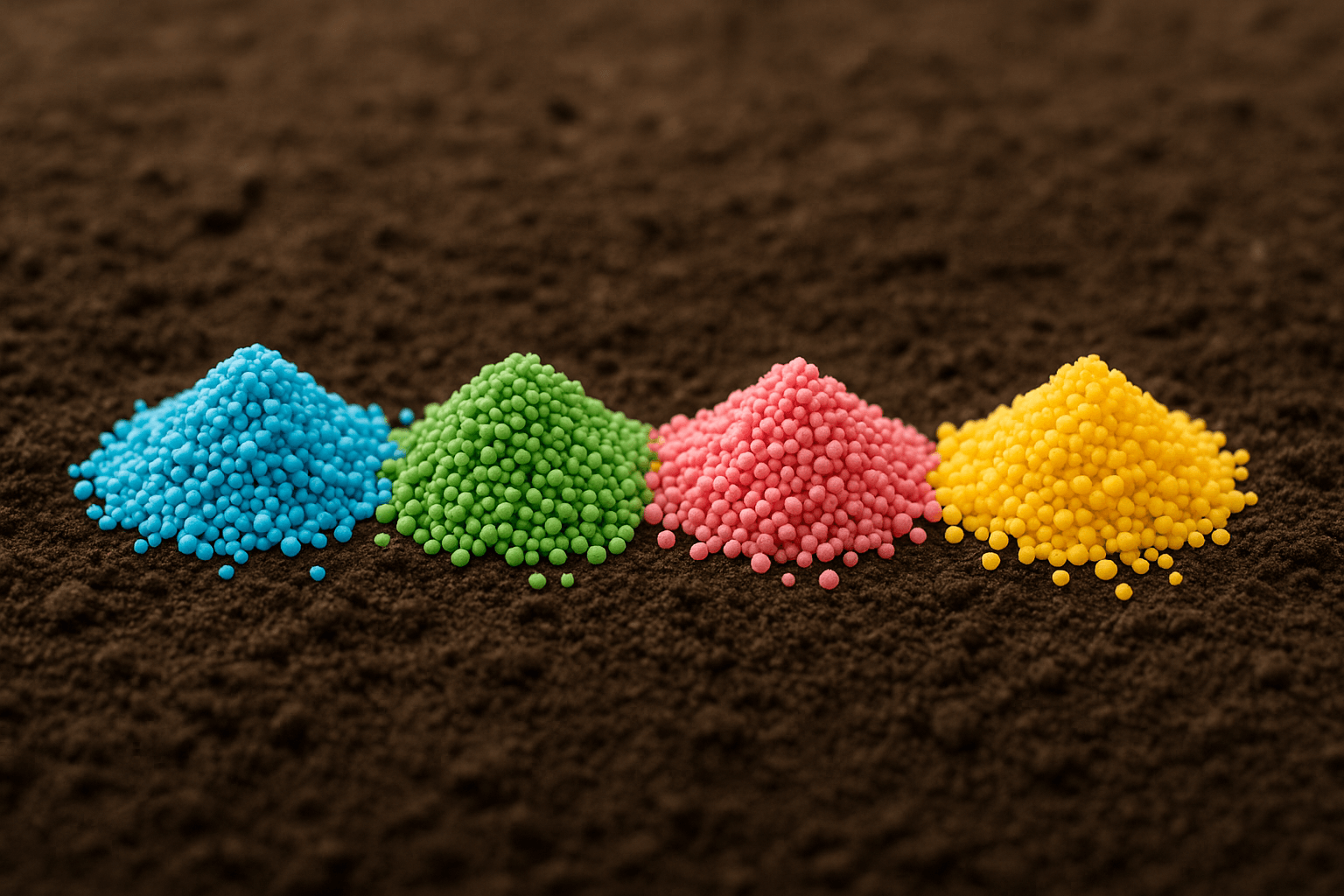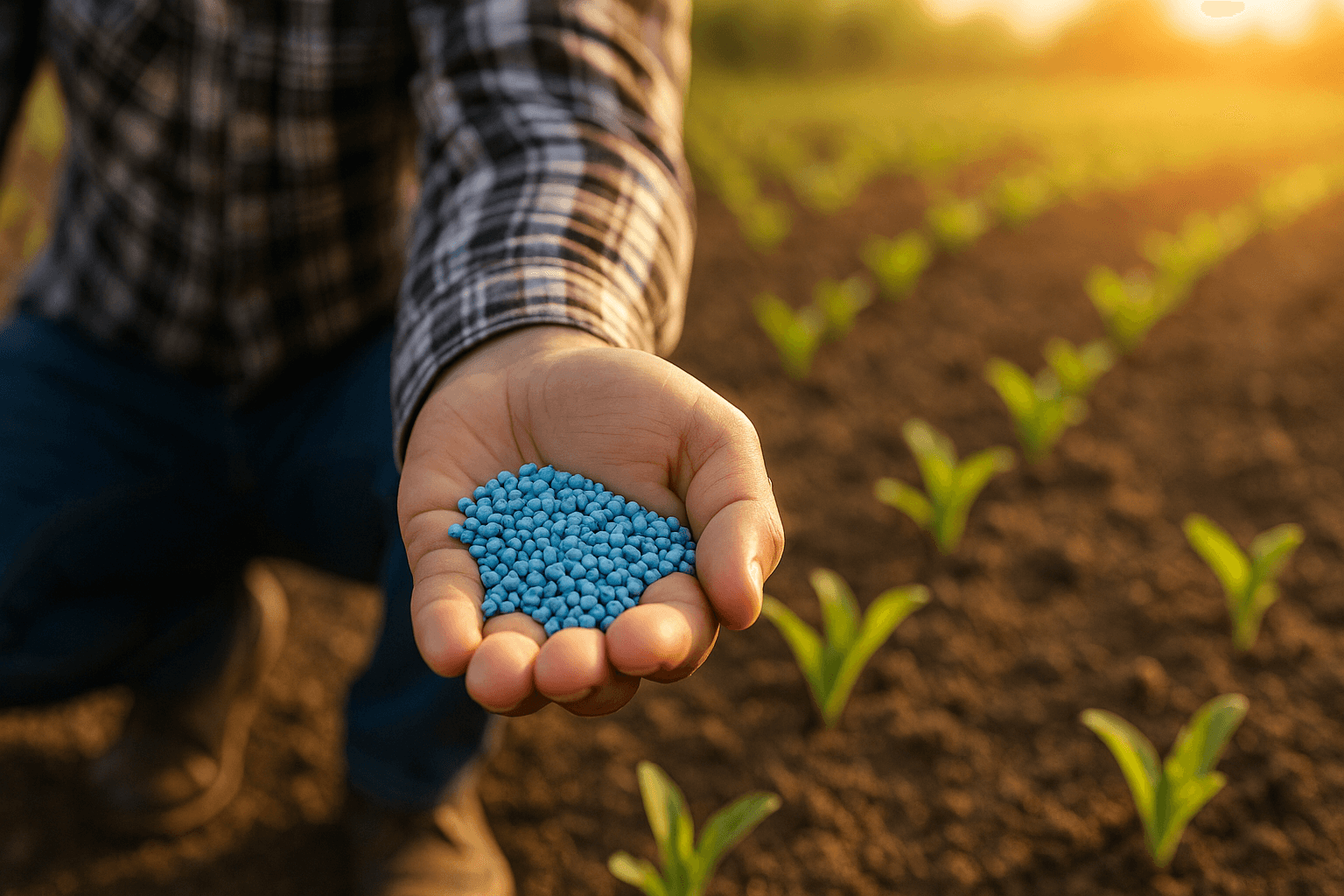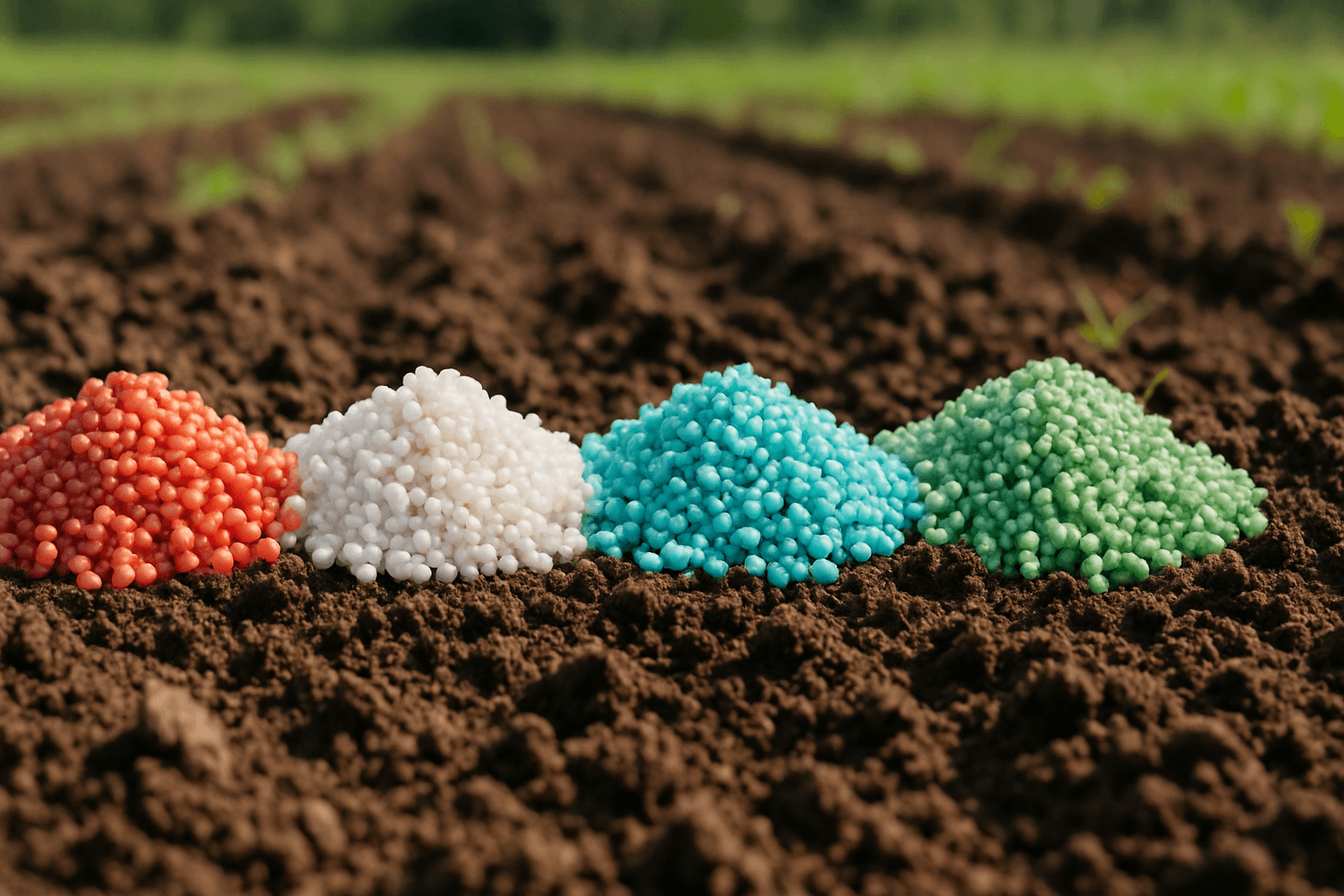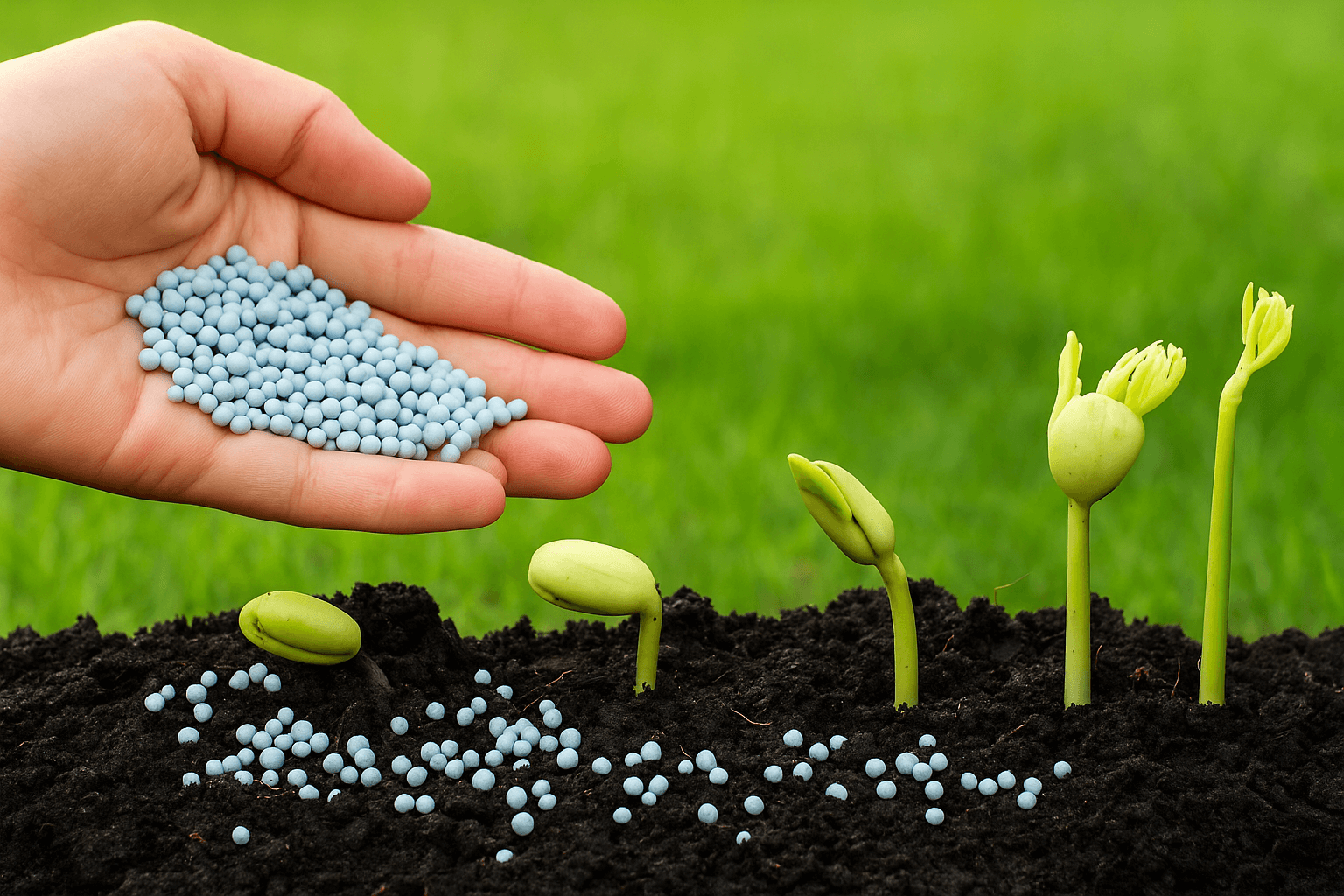What Is Blue Fertilizer and Why Is It Used in Agriculture?
Blue fertilizer is one of the most widely used types of water-soluble compound fertilizers, recognizable by its distinct blue color, which comes from its rich composition of essential nutrients—primarily nitrogen, phosphorus, and potassium (NPK)—in addition to micronutrients like zinc, iron, and magnesium. It is well known among farmers for its high efficiency and rapid effect on plant growth, making it a popular choice in modern agriculture, whether in open fields or greenhouses.
Many growers rely on blue fertilizer for agriculture due to its excellent water solubility, making it highly suitable for drip irrigation and spraying systems. This fertilizer ensures an even distribution of nutrients and allows plants to absorb them quickly, resulting in faster growth, stronger foliage, and enhanced flowering and fruiting at different stages of the plant's life cycle.
Moreover, blue fertilizer is not only easy to use but also increases fertilizer efficiency. It reaches the roots directly through irrigation water, saving farmers time and effort, minimizing nutrient waste, and reducing environmental pollution caused by over-fertilization.
Composition of Blue Fertilizer and the Role of Each Element
Blue fertilizer consists of a carefully balanced mix of macro and micronutrients that plants need during various growth stages. The main components include:
Nitrogen (N): Essential for protein synthesis, it promotes vegetative growth. Plants receiving sufficient nitrogen develop dark green leaves, strong stems, and rapid growth.
Phosphorus (P): Crucial for root development and stimulating the flowering process—particularly important during early growth or after transplanting.
Potassium (K): Enhances fruit quality and plant resistance to diseases and environmental stress such as heat or drought.
In addition to the NPK trio, blue fertilizer typically contains:
Iron (Fe): Vital for chlorophyll production; deficiency leads to yellowing of leaves.
Zinc (Zn): Regulates growth hormones and is important during early development.
Magnesium (Mg): Central to chlorophyll formation and photosynthesis.
Manganese, copper, and boron: Micronutrients that regulate plant physiological processes and improve the uptake of other nutrients.
This balanced formulation makes blue fertilizer for agriculture not only suitable for a wide variety of crops but also a comprehensive solution that supports faster, stronger growth and higher-quality yields.
Benefits of Blue Fertilizer in Plant Growth Stages
Blue fertilizer is among the most versatile fertilizers that can be used throughout the entire plant life cycle. It provides essential nutrients in a balanced and fast-absorbing formula. One of the standout qualities of blue fertilizer for agriculture is that it isn’t limited to a single stage—it can be part of a comprehensive fertilization program from seedling emergence to fruiting and harvest.
1. During the Vegetative Growth Stage
In the early stages of development, the plant focuses on building its root system and vegetative structure—leaves and stems. Here, nitrogen plays a crucial role by:
Promoting protein synthesis responsible for cellular development
Producing dark green, lush foliage that improves photosynthesis
Accelerating vertical growth, preparing the plant for upcoming stages
The result is a healthy, vigorous plant from the start, capable of withstanding harsh environmental conditions.
2. During the Flowering Stage
When the plant begins the flowering and reproductive phase, phosphorus becomes essential.
The phosphorus content in blue fertilizer:
Supports internal flower formation
Increases the number of flower buds
Strengthens roots to ensure efficient nutrient uptake
With its balanced phosphorus ratio, blue fertilizer helps the plant avoid deficiencies during this critical phase, setting the stage for successful fruit development.
3. During Fruiting and Maturation
At the end of the growth cycle, especially during fruit setting and ripening, potassium becomes key.
Potassium contributes to:
Enhancing fruit shape and color
Increasing sugar content and improving flavor (especially in fruits and vegetables)
Strengthening cell walls, which makes produce more resilient to transport and storage
Boosting the plant’s natural disease resistance
Thanks to these well-balanced nutrients, blue fertilizer for agriculture can be used confidently throughout the crop cycle—eliminating the need to switch products or worry about missing essential nutrients.
4. Enhancing the Absorption of Other Nutrients
The water-soluble formula in blue fertilizer also helps improve the absorption of other nutrients, whether from the soil or from supplemental fertilizers.
In essence, blue fertilizer doesn’t work alone—it boosts the plant’s ability to benefit from everything added to the soil, including organic matter, pesticides, or biostimulants, by keeping the root system active and the absorption pathways optimized.
How to Apply Blue Fertilizer Through Irrigation and Fertilization
One of the biggest advantages of blue fertilizer for agriculture is its ease of use and flexibility in application methods, depending on the crop type, irrigation system, and soil conditions. This type of fertilizer is ideal for modern farming systems, particularly those that use drip irrigation or pivot sprinklers, due to its complete solubility and fast absorption.
1. In Drip Irrigation Systems
Drip irrigation is considered the most efficient method for applying blue fertilizer. It can be dissolved in the fertigation tank and delivered directly to the root zone through irrigation water.
This method provides several benefits:
Even nutrient distribution to all plants without waste
Reduced losses due to evaporation or leaching
Precise control over timing and quantity of nutrients based on the crop stage
Less labor and time required compared to manual fertilization
Because of its 100% solubility, blue fertilizer does not clog drip lines, making it safe and reliable for frequent use in high-tech farms.
2. In Sprinkler or Flood Irrigation
If drip systems are unavailable, blue fertilizer can also be used with sprinkler or flood irrigation by:
Dissolving the recommended dose in the water tank
Mixing the solution well before application
Ensuring the soil isn’t saturated beforehand to avoid nutrient loss
For this method, it’s best to apply the fertilizer early in the morning or after sunset to reduce evaporation and maximize absorption.
3. As a Foliar Spray
Blue fertilizer can also be used as a foliar feed, especially when plants are showing signs of deficiency or need a quick boost.
In this method:
A diluted solution is prepared according to recommendations
The mixture is sprayed evenly onto the leaves, ideally during cooler times of day
Spraying may be repeated weekly or as needed
This approach delivers fast visible results, as nutrients are absorbed directly through the leaf tissues.
4. Dosing and Frequency
Doses vary depending on:
The crop type (vegetables, fruits, grains, ornamentals)
Plant age
Soil composition and existing nutrient levels
Typically, the dose ranges from 1 to 3 kg per feddan per week, but adjustments should be made based on expert guidance and plant response.
How Blue Fertilizer Compares to Other Types of Fertilizers
The agricultural market offers a wide range of fertilizers: organic, chemical, compound, liquid, and more—each with its own characteristics and uses. But the common question remains: What makes blue fertilizer for agriculture stand out from the rest?
The answer lies in its formulation, absorption method, and speed of effectiveness—all of which clearly distinguish it from other types.
1. Complete Solubility vs. Traditional Fertilizers
Conventional granular fertilizers like urea or superphosphate take longer to break down in the soil and be absorbed by plants.
In contrast, blue fertilizer:
Dissolves 100% in water
Reaches plant roots immediately
Is absorbed within hours instead of days
This translates to faster growth and visible results, especially for short-cycle crops like leafy greens and strawberries.
2. Balanced Nutrient Content
Many fertilizers offer just one concentrated nutrient—like ammonium nitrate, which is high in nitrogen.
Blue fertilizer, however, provides a balanced blend of NPK + micronutrients, giving the plant everything it needs in a single product—eliminating the need for complex mixtures or multiple applications.
This balance is particularly valuable in intensive farming, where timing and precision are crucial.
3. Ease of Use and Application
Other fertilizers may require special tools or advanced training for proper application.
Blue fertilizer can be added directly to irrigation tanks or sprayed on leaves with minimal effort.
This makes it equally suitable for small farmers and large commercial operations.
4. Environmental Impact
While blue fertilizer is classified as a chemical fertilizer, using it in controlled doses and thanks to its complete solubility, results in less waste and less environmental pollution, unlike some fertilizers that accumulate in the soil or leach into groundwater.
5. Fast Plant Response
Crops treated with blue fertilizer typically show improvement within a few days:
Accelerated growth
Greener, more vibrant leaves
Earlier flowering and fruit setting
By contrast, other fertilizers may take two weeks or more to show visible results—causing delays in crop schedules and yield targets.
Best Crops for Blue Fertilizer
Although blue fertilizer for agriculture can be used with nearly all types of plants, certain crops show faster and more noticeable responses due to their high nutrient demands and rapid growth cycles. These crops benefit the most from the fertilizer’s balanced formula and quick absorption.
1. Leafy Vegetables
Leafy greens like lettuce, arugula, spinach, and molokhia respond exceptionally well to blue fertilizer.
These crops grow quickly and are harvested within a short period, making fast-acting and balanced nutrition critical.
The high nitrogen and magnesium content in blue fertilizer promotes:
Lush green foliage
Strong leaf structure
High-quality, marketable yields
2. Fruit-Bearing Crops
Crops like tomatoes, strawberries, watermelon, and cantaloupe benefit significantly from blue fertilizer, especially during flowering and fruit-setting stages.
The potassium and phosphorus in the formula:
Improve fruit shape, color, and taste
Speed up ripening
Strengthen the fruit’s skin, making it more resilient during transport and storage
3. Export-Oriented Crops
Such as green beans, colored bell peppers, zucchini, grapes, and pomegranates, which are grown for export markets and must meet high standards.
Blue fertilizer helps:
Produce uniform fruit size and color
Increase sugar and dry matter content
Enhance slelf life and appeal to global buyers
4. Ornamental Plants
Ornamentals and flowering trees require precise feeding to encourage regular blooming and maintain vibrant leaf color.
Blue fertilizer provides essential micronutrients like iron, manganese, and zinc, which directly affect:
Leaf pigmentation
Flower formation
Overall aesthetic appeal
5. Greenhouse Crops
In greenhouse systems, drip irrigation is the primary method for nutrient delivery.
The high solubility of blue fertilizer makes it ideal for this controlled environment.
It allows growers to:
Deliver precise doses
Avoid clogging irrigation lines
Optimize nutrient use and growth rate
6. Poor or Sandy Soils
In light, sandy, or nutrient-deficient soils, nutrients are quickly lost through leaching.
Blue fertilizer is ideal in such conditions because it:
Dissolves rapidly
Reaches the roots before nutrients are lost
Replenishes deficiencies efficiently
Common Mistakes to Avoid When Using Blue Fertilizer
Although blue fertilizer for agriculture is one of the most effective and user-friendly options available, some farmers make common mistakes that can lead to poor results or reduced efficiency. Understanding these mistakes is key to ensuring safe and successful application.
1. Over-application
One of the most frequent misconceptions is that “more fertilizer means better results.”
In reality, excessive use can:
Burn plant roots due to salt accumulation
Disrupt nutrient balance in the soil
Cause symptoms like leaf yellowing or poor flowering
Solution: Follow recommended dosages, and start with a lower amount before increasing based on the plant’s response.
2. Mixing with Incompatible Products
Some users mix blue fertilizer with other fertilizers or pesticides without checking chemical compatibility.
This may result in:
Reactions that cause sediment or nutrient loss
Clogged irrigation systems
Negative effects on plant health
Solution: Always test small mixtures before wide application, or consult an agronomist or product manual.
3. Applying at the Wrong Time
Fertilizing during hot midday hours or just before rainfall reduces effectiveness due to evaporation or nutrient runoff.
Solution:
Apply early in the morning or after sunset
Avoid fertilizing right before rain, especially in sandy soils
4. Ignoring Soil Testing
Applying blue fertilizer without knowing the actual soil nutrient profile may lead to waste or imbalance.
Your soil may already have high levels of some nutrients.
Solution:
Perform regular soil tests
Adjust the fertilization program based on real data
5. Relying on It Alone Without Supplements
While blue fertilizer provides a broad spectrum of nutrients, some crops may still require additional micronutrients or growth regulators.
Depending only on blue fertilizer may result in hidden deficiencies.
Solution:
Get professional advice to determine if supplements are needed
Monitor crop performance closely for early signs of deficiency
Conclusion
In today’s competitive agricultural landscape, using efficient and easy-to-apply solutions is no longer optional—it’s a must.
Blue fertilizer for agriculture stands out as one of the most reliable options, thanks to its balanced formulation, ease of use, and fast, visible results: better growth, higher yields, and improved product quality.
Whether you grow vegetables, fruits, or ornamentals, incorporating blue fertilizer into your feeding plan delivers consistent results—as long as it’s applied properly, in the right dose, and at the right time.
Choosing the right fertilizer is a smart move…
But using it wisely is what truly makes the difference.
